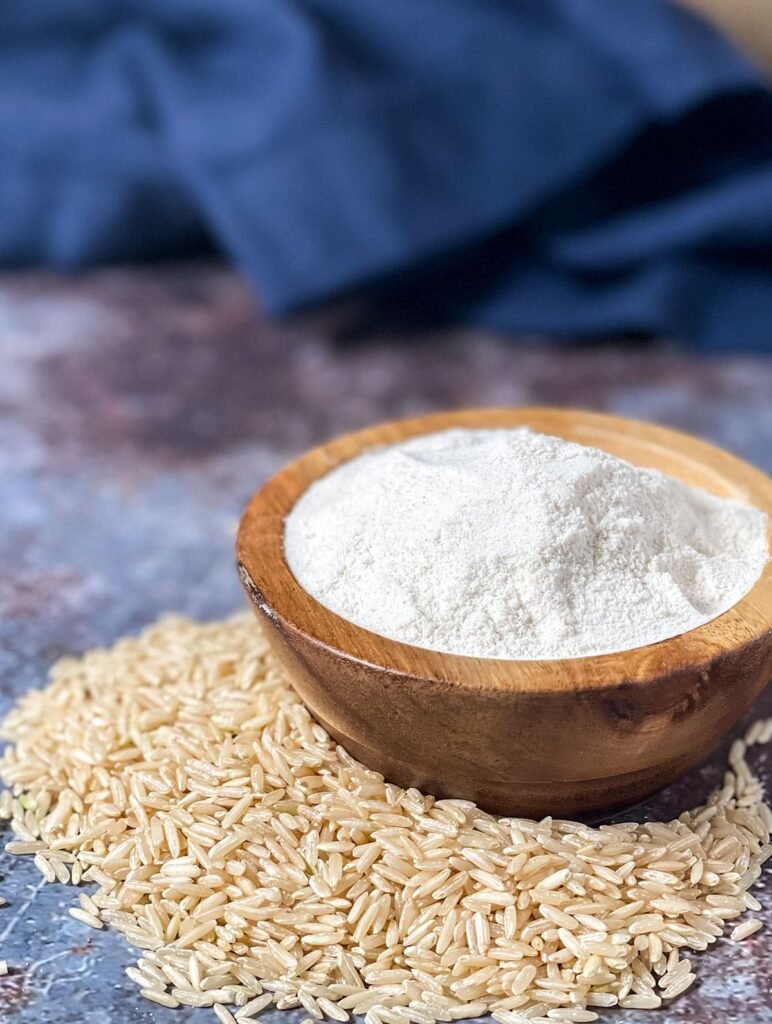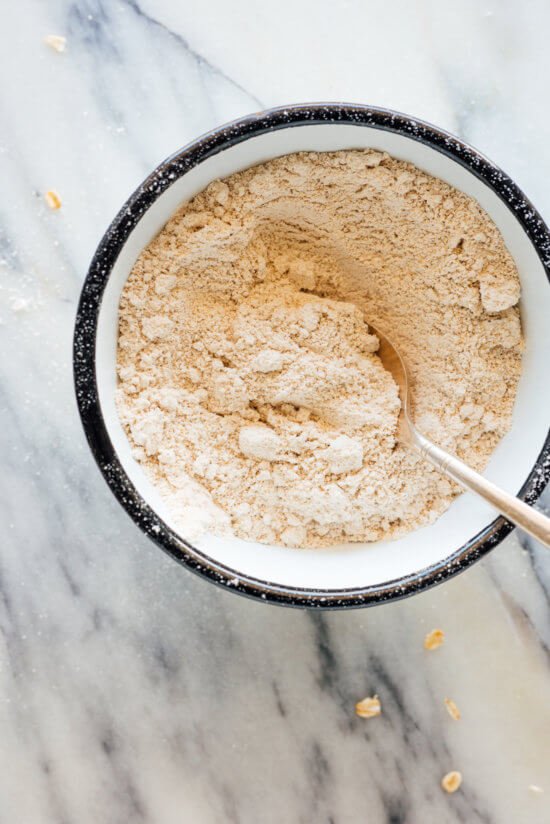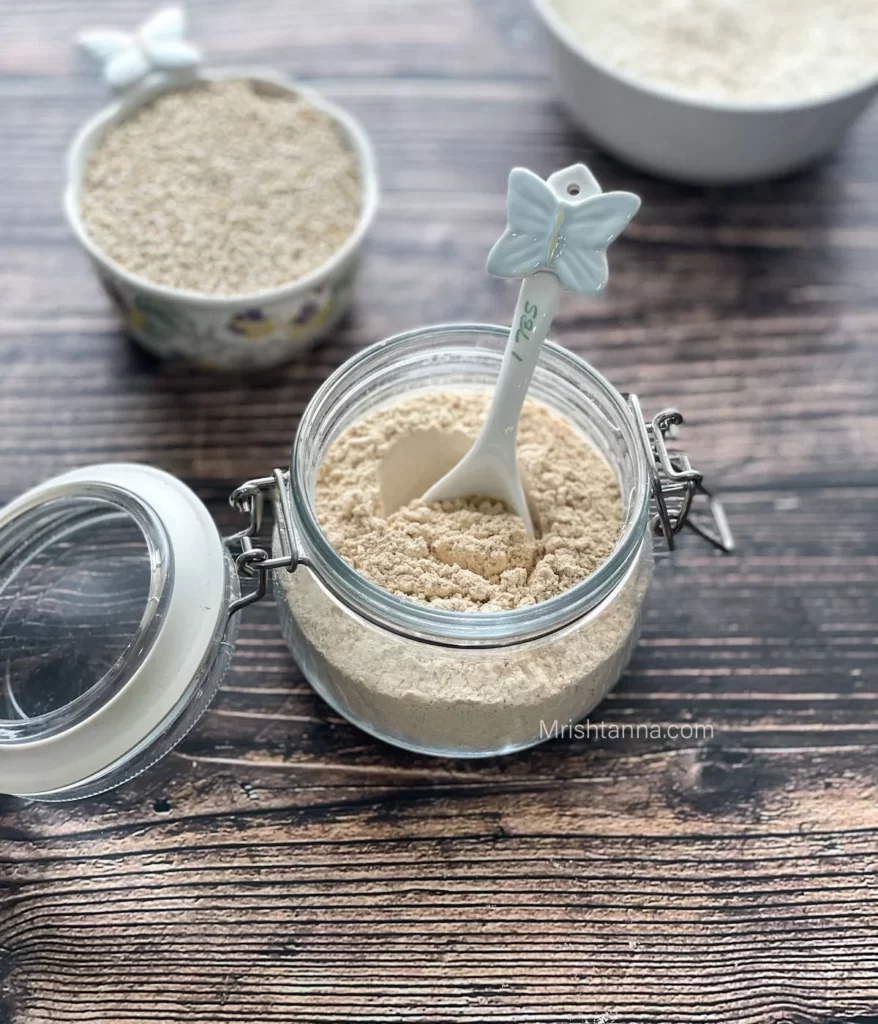Are you looking for a gluten-free alternative to traditional flour?
Or maybe you’re just trying to add some variety to your baking arsenal?
Brown rice flour is an excellent choice for both of these situations.
It can be used as a substitute in many recipes, and it has a unique nutty flavor that makes it stand out from other flours.
But what happens if you don’t have brown rice flour on hand?
Don’t worry – there are plenty of substitutes that will do the trick!
In this article, we will discuss seven of the best substitutes for brown rice flour so that you can continue baking without any hiccups.
What is Brown Rice Flour?

Brown rice flour is a gluten-free, whole-grain flour made from finely milled brown rice.
It’s coarser than white rice flour and has a nutty flavor that’s perfect for baking and cooking.
The product is used as an alternative to wheat flours in breads, cakes, and other baked goods.
Brown rice flour can also be used as a substitute for all-purpose or pastry flours when making pancakes, waffles, muffins, cookies, biscuits, and more.
It can even be used to make batters for fried foods like tempura or onion rings which gives them a crunchy texture.
This versatile ingredient is also great for thickening sauces and gravies or binding together ingredients in meatballs or veggie burgers without adding too much flavor of its own.
The 7 Best Substitutes For Brown Rice Flour
Brown rice flour is a nutritious, gluten-free flour alternative.
However, it can be difficult to find in some areas.
If you’re looking for something similar but easier to source, here are seven great substitutes for brown rice flour:
1 – White Rice Flour

White rice flour is a popular gluten-free cooking ingredient, which makes it great for those with dietary restrictions.
But that isn’t the only reason why white rice flour is so commonly used in cookery.
It has a subtle flavor and releases some natural sweetness when cooked, making it perfect for desserts and baked goods.
Plus its fine texture allows recipes to appear smooth and free from lumps.
White rice flour may be better than brown rice flour in some instances as it offers more starch content, giving your dish greater consistency when mixed with other ingredients like broth or sauces.
Additionally, it absorbs liquids more quickly due to its finer grind – this could come in handy if you’re looking for an accelerated process of ensuring flavors can mix together properly before serving time!
2 – Potato Starch

One of the reasons potato starch has become so popular in cooking, is because it brings more texture and a slightly sweet flavor to dishes—adding richness.
It also holds very well for baking recipes that require large amounts of liquid, as it helps thicken them up without compromising their consistency.
When you want a soft and light product, like cookies or muffins, substitution with potato starch instead of other ingredients like brown rice flour would be beneficial.
This is because potatoes have higher moisture content than other starches; therefore resulting in softer baked goods and less dense products due to its structure absorbing more liquids then any other type of flour or starch.
3 – Oat Flour

Oat flour is hugely popular in cooking because of its light, slightly sweet taste which complements a number of dishes – it can be used for baking as well as savory recipes.
In baked goods, it adds moisture, structure and texture to the dish; plus its protein content helps give desserts a creamier finish.
It’s also denser than regular wheat flour making cakes or cookies extra moist but not dense.
Oat flour is gluten-free too, so those with allergies or intolerances don’t have to worry about that either!
In comparison to brown rice flour, oat flour will be the better choice in terms of taste and texture when making desserts like muffins or pancakes.
Brown rice flour can make baked goods more crumbly and dry unless other ingredients are added (like eggs) while oat flour’s higher protein content gives it an edge over other gluten-free flours such as almond meal or coconut four.
Additionally, oat flour isn’t as heavy as some other flours which makes delicate pastries less likely to collapse once out of the oven!
4 – Amaranth Flour

Amaranth flour has long been one of the most popular ingredients for gluten-free baking and cooking.
The flavor it imparts to dishes is second to none: its nutty and earthy notes boosts the flavors of any meal.
What’s more, amaranth flour can not only give you a great taste but also enhance the nutrient density of your meals.
Unlike other flours such as wheat or brown rice flour, amaranth provides all nine essential amino acids that make it a complete protein—great news for vegans!
When you should use amaranth flour depends on what kind of dish you are preparing.
If you need an extra thickener when making soup or stews then amaranth would be ideal due to its glutinous nature that helps hold everything together.
Amaranth is perfect for baked goods too—its crunchiness lends itself well to biscuits, muffins and cakes with a slightly crisp exterior contrasted by a moist interior!
5 – Sorghum Flour

Sorghum flour has been quickly growing in popularity due to its gluten-free quality and unique taste.
It is an ancient grain that belongs to the grass family, allowing it to be adaptable for diabetics and those with gluten sensitivities.
Sorghum flour makes a great substitute for brown rice flour when recipes call for delicate textures or distinct flavors.
Because of its lighter consistency, it works well in batters like pancakes and crepes as opposed to heavier items like fried foods where brown rice flour would be more suitable.
Sorghum also pairs nicely with roasted vegetables or added as a binder instead of breadcrumbs—try adding some sorghum to your salmon cakes!
Also versatile enough to sweeten desserts, you can use sorghum in cake batters, breakfast pastries, cookies and even muffins since it adds some extra sweetness without overpowering other ingredients.
Overall, sorghum is becoming increasingly popular due its light yet robust flavor profile which makes it perfect for almost any recipe where other grains might not work as well.
Sorghum’s versatility make it especially appealing if you are looking for new ways to spice up dishes from appetizers
6 – Quinoa Flour

Quinoa flour is becoming increasingly popular due to its minimal preparation time, versatile nature, and great taste.
It has a mild, nutty flavor which fits in perfectly with many dishes from sweet treats to savory meals.
Plus it’s gluten-free, so perfect for those avoiding wheat products or watching their carbs.
It can be used as an alternative to white flour (giving pancakes and cakes a unique twist) or swapped out for wheat flour in bread dough recipes where you want a denser texture; ideal when you are making pizza crusts or focaccias.
However, where brown rice flour often requires rising agents like baking powder, quinoa won’t require this extra step.
This makes it ideal if you’re short on time!
Quinoa also lends itself well to desserts too, replacing traditional almond meal and giving the classic lemon tart an interesting new texture.
Ultimately Quinoa guarantees delicious results without blowing up your grocery bill – what more could one want?
7 – Almond Flour

Almond flour is growing in popularity due to its flavor and texture.
This finely ground almond meal is easily incorporated into many different dishes including cakes, cookies, pizza crusts, muffins, pancakes, French toast, and more.
Its nutty taste pairs well with both sweet and savory flavors making it incredibly versatile.
In terms of when it would make sense to use almond flour versus brown rice flour; I would recommend using almond flour when the dish requires something slightly denser or a richer flavor than what brown rice could provide – while also not wanting something that’s too heavy such as if you’re making a light cake.
Almond flour will give you a heartier texture without overpowering your dish with an overabundance of sweetness like other flours may do.
Conclusion
So, if you don’t have brown rice flour on hand, don’t despair – there are several other flours that can be used as a substitute.
White rice flour, potato starch, oat flour, amaranth flour, sorghum flour, quinoa flour, and almond flour are all great alternatives that can be used to make delicious baked goods.
Each of these flours has its own unique flavor and texture, so experiment with them to find the one that works best for you and your recipes.
With these options, you can still make all of your favorite treats, gluten-free and delicious!

The 7 Best Substitutes For Brown Rice Flour
Ingredients
- White Rice Flour
- Potato Starch
- Oat Flour
- Amaranth Flour
- Sorghum Flour
- Quinoa Flour
- Almond Flour
Instructions
- Pick your favorite substitute from the list above.
- Follow cooking directions for your selected substitute with the proper ratio of ingredients.
Hi, I'm Benjamin. I love cooking, long walks, and my girlfriend! Here you’ll find simple and delicious recipes that you can make in 30 minutes or less.

